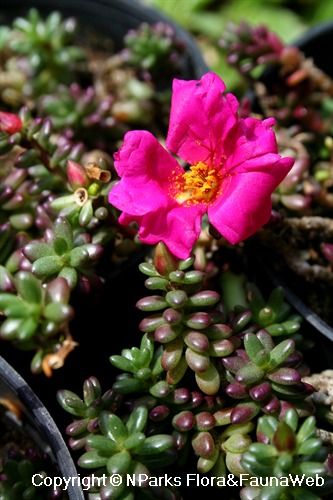
Back
Portulaca pilosa 'Mini'
| Family Name: | Portulacaceae |
| Common Name: | Mini Japanese Rose, Moss Rose, Mexican Rose, Sunplant |
Name
Classifications and Characteristics
| Plant Division | Angiosperms (Flowering Seed Plants) (Dicotyledon) |
|---|---|
| Plant Growth Form | Herbaceous Plant, Creeper |
| Lifespan (in Singapore) | Perennial |
| Mode of Nutrition | Autotrophic |
| Plant Shape | Compact |
| Maximum Height | 2 cm |
Description and Ethnobotany
| Growth Form | Herbaceous, succulent, creeping sub-shrub with low and compact growth habit, up to 2cm height. |
|---|---|
| Foliage | Leaves oval with rounded tips, sessile (no stalk), small (0.7cm long by 0.5cm across), fleshy and Sedum-like , reddish-purple-green if exposed to full sunlight, reverting to greenish if placed in shadier conditions. |
| Stems | Fleshy, greyish, terete (cylindrical and tapering), prostrate or slightly ascending. |
| Flowers | Solitary, around 2cm across, 5 pink petals, with dark pink hairy stigmas and anthers (which may be covered with yellow pollen), with whitish stipular hairs at nodes and beneath flowers. |
| Fruit | Not observed in Singapore. |
| Similar | Sold locally as Portulaca 'Mini', but could be a dwarf but bigger-flowered variation of Portulaca pilosa (syn. Portulaca sediodes) due to profuse stipular hairs and lack of spots at flower bases found in Portulaca grandiflora cultivars. |
| Cultivation | Prefers dry, well-drained soils. Provide more light for better flowering, more intensely-coloured leaves and fuller growth. May be prone to leaf drop and bare patches, when grown in clayey soils, or when overwatered or underwatered. Easily propagated by stem or leaf cuttings. |
| Etymology | Genus epithet 'Portulaca' is the old Latin name for purslane, meaning "to carry milk" (portare: to carry or bear, lac: milk), a reference to the succulent sap of the fleshy plant. |
Landscaping Features
| Desirable Plant Features | Ornamental Flowers |
|---|---|
| Landscape Uses | Skyrise / Balcony, Container Planting, Suitable for Rooftops |
| Thematic Landscaping | Rockery / Desert Garden |
Fauna, Pollination and Dispersal
| Seed or Spore Dispersal | Abiotic (Explosive Dehiscence) |
|---|
Plant Care and Propagation
| Light Preference | Full Sun |
|---|---|
| Water Preference | Little Water |
| Plant Growth Rate | Moderate |
| Rootzone Tolerance | Easy to Grow, Drought Tolerant, Well-Drained Soils, Shallow Media |
| Maintenance Requirements | Moderate |
| Potential Problems | Plant may become scanty with bare patches if over or underwatered. |
| Propagation Method | Stem Cutting, Leaf Cutting |
| Propagule Establishment Remarks | Stem and leaf cuttings root easily. |
Foliar
| Foliage Retention | Evergreen |
|---|---|
| Mature Foliage Colour(s) | Green, Purple, Red |
| Mature Foliage Texture(s) | Smooth, Glossy / Shiny, Thick |
| Foliar Modification | Reduced / Needle-like |
| Foliar Type | Simple / Unifoliate |
| Foliar Arrangement Along Stem | Spiral |
| Foliar Shape(s) | Non-Palm Foliage (Oval) |
| Foliar Margin | Entire |
| Foliar Apex - Tip | Obtuse |
| Foliar Base | Truncate / Square |
| Typical Foliar Area | Nanophyll ( 0.25cm2 - 2.25 cm2 ) |
| Leaf Area Index (LAI) for Green Plot Ratio | 4.5 (Shrub & Groundcover - Dicot) |
Non - Foliar and Storage
| Stem Type & Modification | Herbaceous, Runner / Stolon |
|---|---|
| Root Type | Underground (Fibrous Root) |
| Specialised Storage Organ(s) | Aboveground |
Floral (Angiosperm)
| Flower & Plant Sexuality | Bisexual Flowers |
| Flower Colour(s) | Pink, Yellow / Golden |
|---|---|
| Flower Symmetry | Radial |
| Flower Size - Remarks | 2cm across, 5 pink petals, yellow stamens & anthers |
| Ovule Placentation | Basal |
| Flowering Opening Time | Daytime |
| Flower Lifespan on Plant | 1 Day |
| Flowering Habit | Polycarpic |
Fruit, Seed and Spore
| Fruit Classification | Simple Fruit |
|---|---|
| Fruit Type | Dehiscent Dry Fruit , Capsule |
Image Repository
Others
| Master ID | 29133 |
|---|---|
| Species ID | 3442 |
| Flora Disclaimer | The information in this website has been compiled from reliable sources, such as reference works on medicinal plants. It is not a substitute for medical advice or treatment and NParks does not purport to provide any medical advice. Readers should always consult his/her physician before using or consuming a plant for medicinal purposes. |

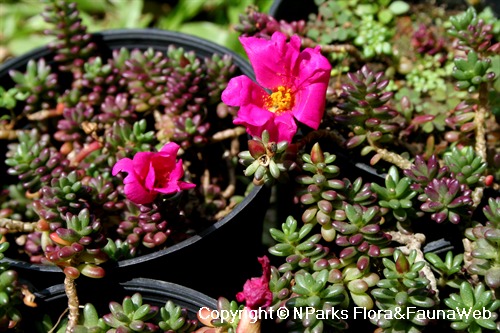
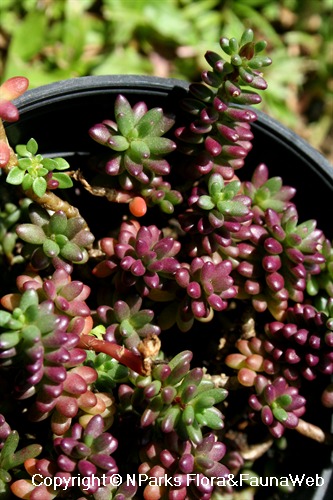
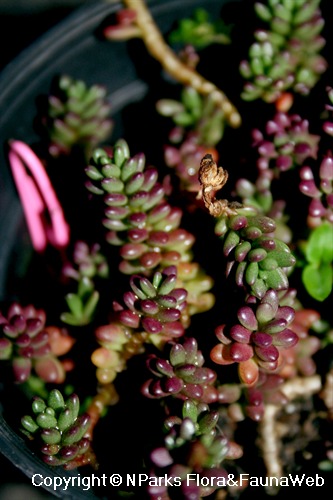
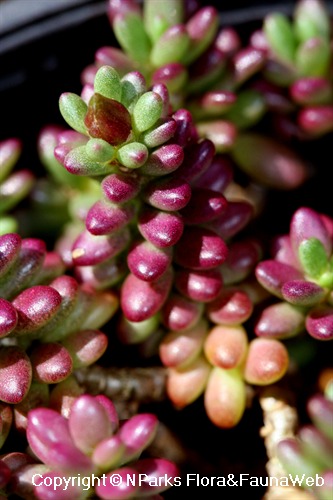
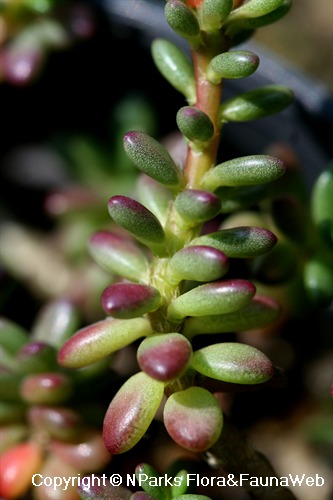
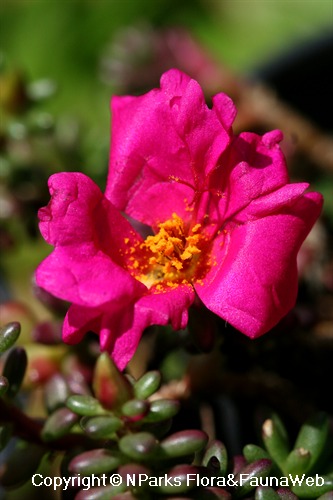
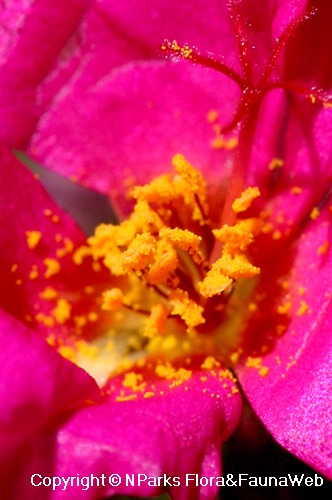
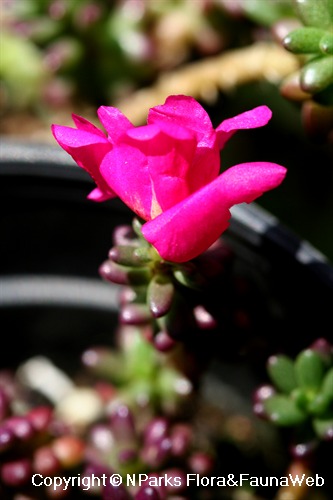
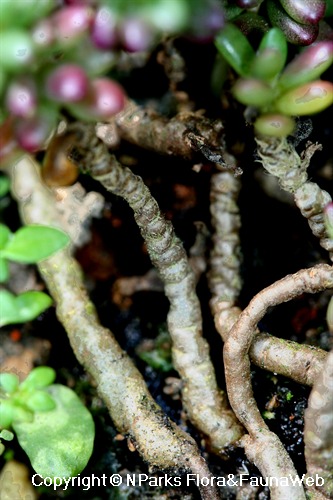
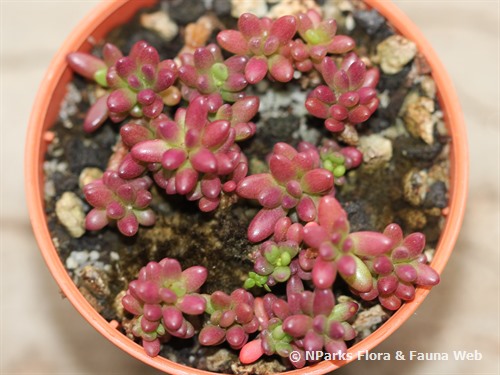
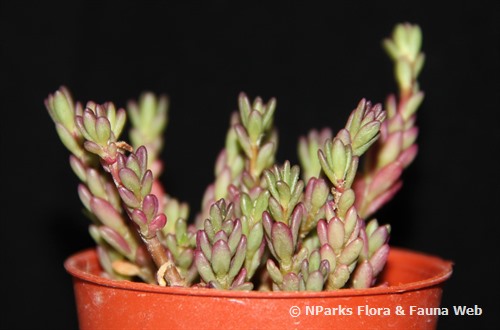
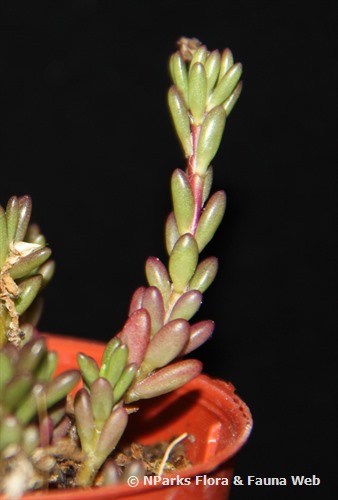
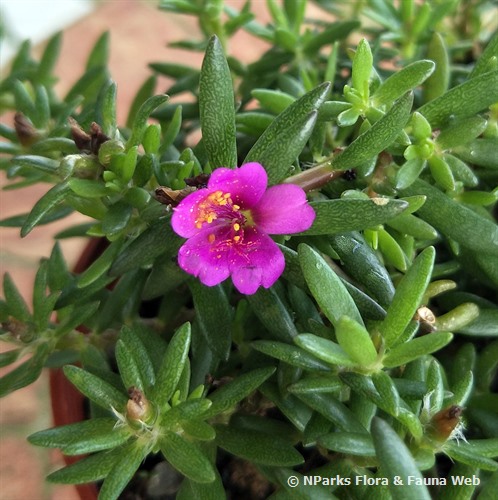


.jpg)